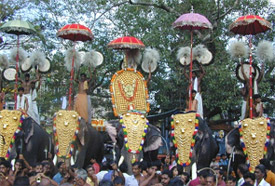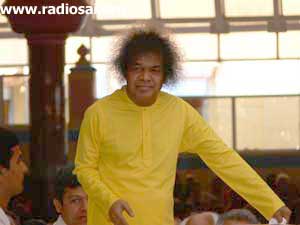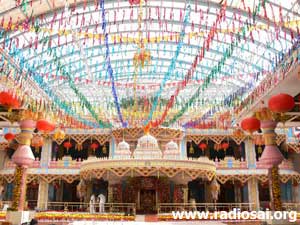









Thrissur Pooran, is celebrated in Thrissur (in Kerela)at Vadakkumnathan in the month of Medam (April) every year where the regaining deity is Lord Shiva. This 200 year old festival this year starts in Thrissur in Kerala on April 16 2008.
Thrissur Pooram, the mother of all temple festivals in the state of Kerala held at the two devaswams- Paramekkavu Bhagavathy temple ( the Devi temple) and Thiruvambadi Sree Krishna temple ( the Krishna Temple). The main part of the Thrissur Festivals include the displays of parasols and processions by the two rival groups form Paramekkavu and Thiruvambadi representing the two parts of Thrissur.While the main participants are Paramekkavu and Tiruvambadi, close to the Vadakunnathan temple.Also participating and known as 'Cherupooram' are the suburban temples at Kanimangalam, Karamukku, Choorakkattukara, Laloor, Ayyanthole, Neithilakkavu and Chembukkavu, Panamukkampilly, altogether 8 deities.The sprawling Thekkinkadi maidan, encircling the Vadakumnathan temple, is the main venue of the festival.
This festival is celebrated with a colourful procession and parade of caparisoned elephants, parasols, drums, display of pyro-techniques. During the festival season, Thrissur, popularly known as the temple town in Kerala turns into a town of colour and celebrations.The exhibition of the paraphernalia of elephant decorative, commonly known as ‘Aana Chamayal pradarsanam’, the spectacular show of ‘Kudamattom’ in which parasols of myriad numbers, designs and colours are exchanged by the people atop the elephants. An elephant also carries the "thidambu" ( means image of the deity).
The Pooram programmes begin with the ezhunellippu of the Kanimangalam Shasta in the morning and is followed by the ezhunnellippu of the other six minor temples on the Pooram Day. The ezhunnellippu programme which is considered to be a ritual sybolising the visit of the Devi from the Paramekkavu and Thiruvambadi temples to the Vadakkunnathan temple.
A major event of the Pooram festival is the Panchavadyam in which about 200 artistes from the musical disciplines of Thimila, Maddalam, trumpet, cymbals and Edakka participate. Another major event of the pooram begins with the setting off of the ‘Pandemelam’at noon in which about 200 artistes in the musical disciplines of drums, trumpets, pipe and cymbals participate. The grand finale of this festival of grandeur, music and fire works would be marked with a function of bidding farewell to the deities of the Thiruvambadi and Paramekkavu Devaswams in front of the Western Gate of the Vadakkunnathan Temple.
The Pooram festival is concluded with a spectacular fire works display, which is held in the wee
hours of the day after the Pooram. The Thiruvambadi and Paramekkavu Devaswams present many innovative patterns and varieties of fire works festival.
The religious significance of Pooram -
The legend behind this festival is that the word "pooram" literally means a group or a meeting, it was believed that every year the dynastic gods and goddesses of neighbouring province met together for a day of celebration. This usually happened on the pooram asterism of one of the spring months. The gods and their entourage arrived for the meeting on colourfully decorated tuskers/elephants. Accordingly the two most prominent opposing groups from the Krishna temple at Thiruvambadi and the Devi temple at Paramekkavu display their parasols and elephants in what symbolises an assemblage of suburban deities before the presiding deity at the Siva temple in Thrissur.
At the close of the Pooram both these rival groups enter the temple through the western gate and come out through the southern gate to array hemselves, face to face, one from the round and other form the Municipal Office road. Although this grand festival is known as Thrissur Pooram, it is in fact the conclusion of the eight - day Utsavam of nine temples.
The historical significance of Pooram -
Before the advent of Thrissur Pooram, the largest temple festival during summer in central Kerala was the one-day festival held at Aarattupuzha, 12 km south of Thrissur. Temples in and around Thrissur were regular participants of this religious exercise until they were once denied entry by the responsible chief of the Peruvanam area of Cherpu, known for its Namboodiri supremacy. As an act of reprisal, Prince Rama Varma (1751-1805), also known as Sakthan Thampuran who was then the ruler of the erstwhile Cochin state invited all these temples to bring their deities to Thrissur where they could pay obeisance to Lord (Sri) Vakunnathan ( Lord Shiva), the deity of the Vadakunnathan temple. It was he who made the sprawling Thekkinkadu Maidan the major venue of Thrissur Pooram. He entrusted the onus of holding the festival to the two public temples- Tthiruvampadi and Paramekkavu temples .He himself is said to have drawn up the 36-hour hectic schedule of the Pooram festival.






